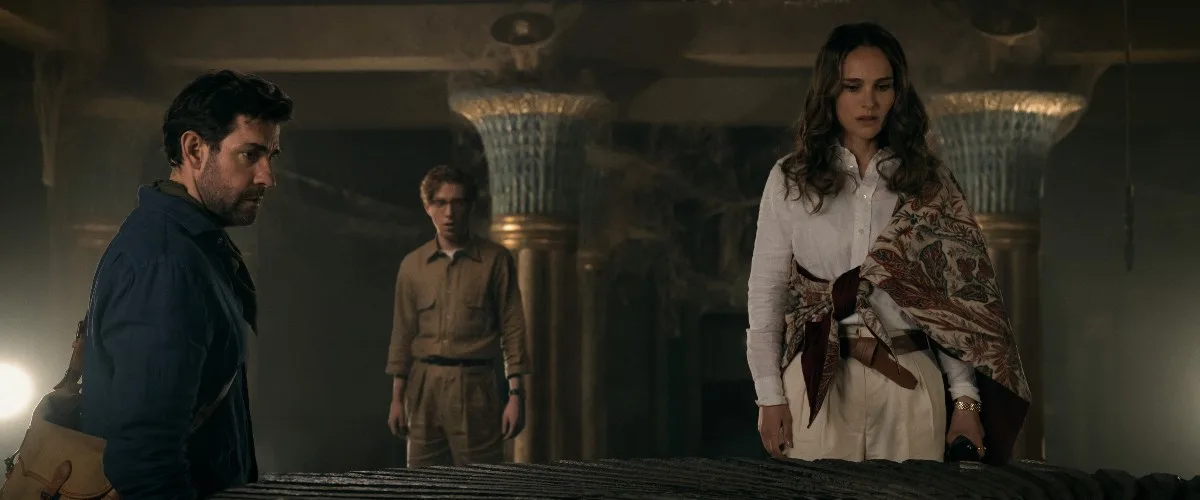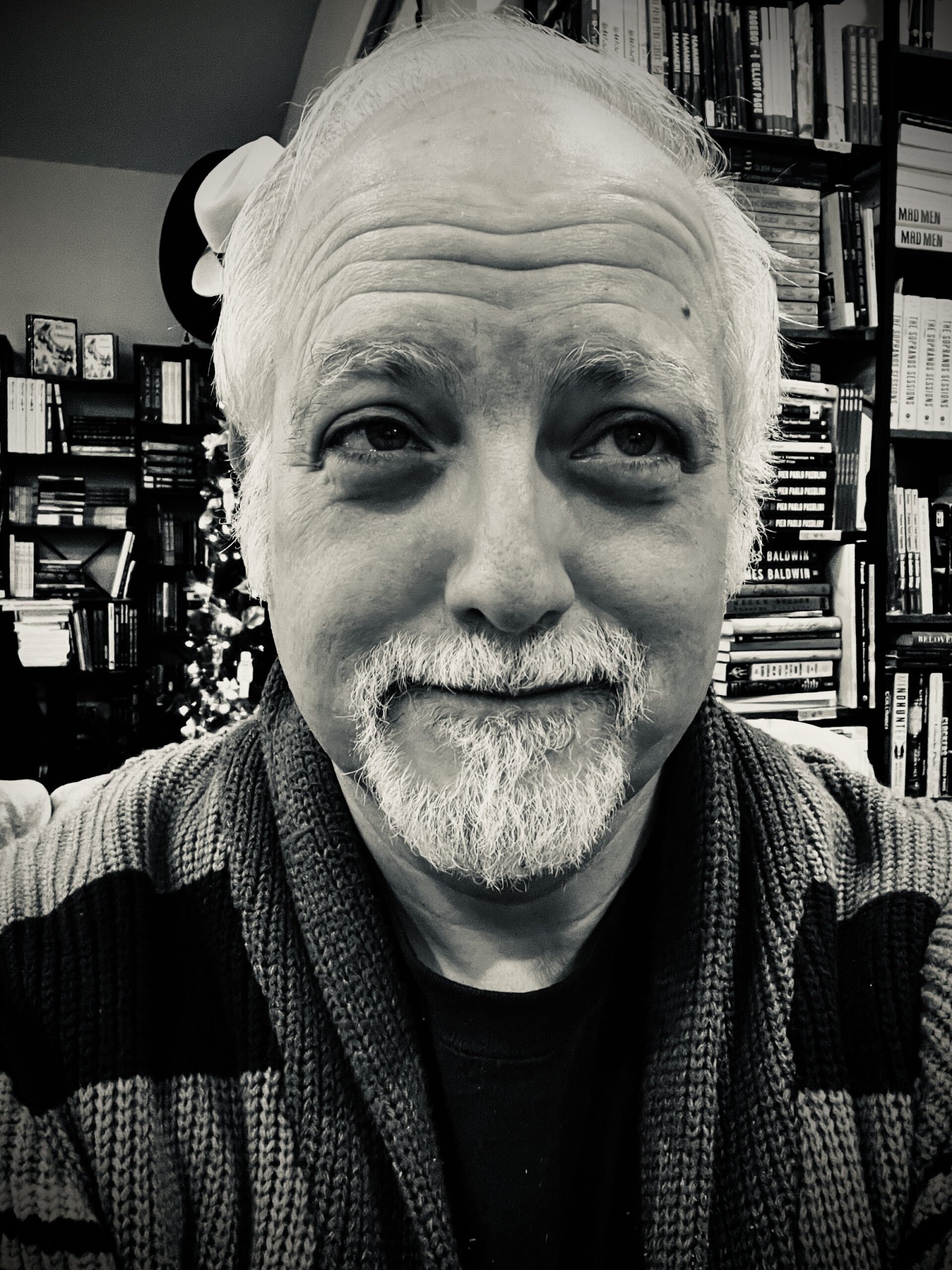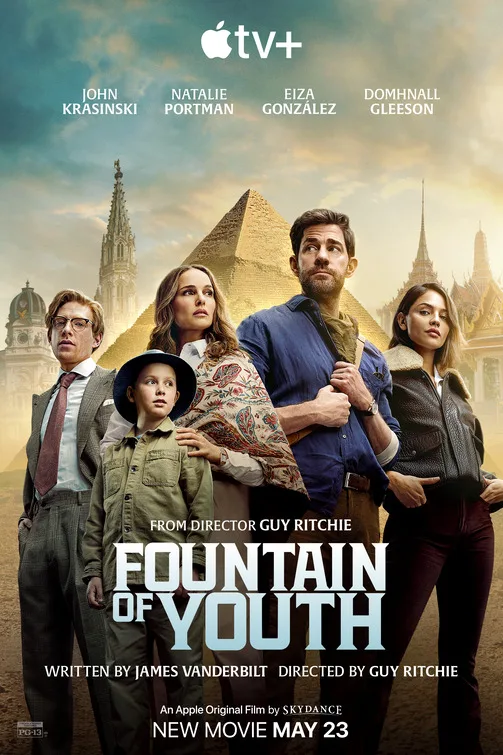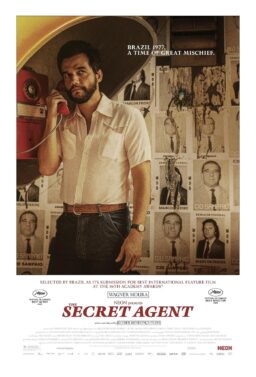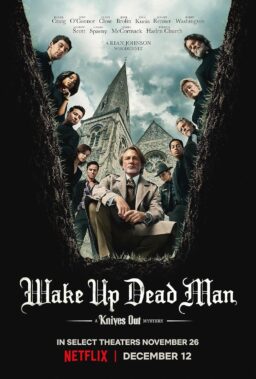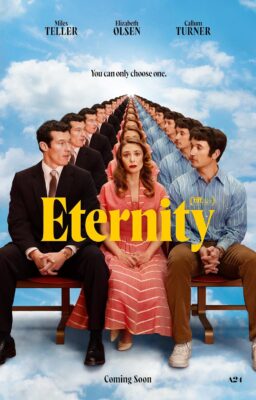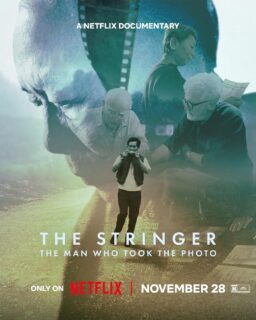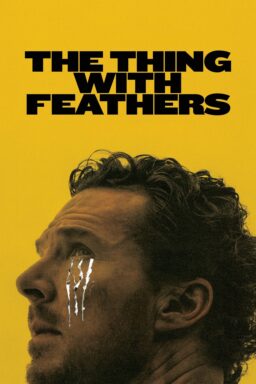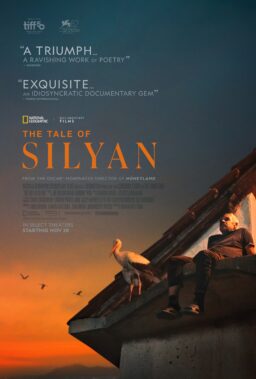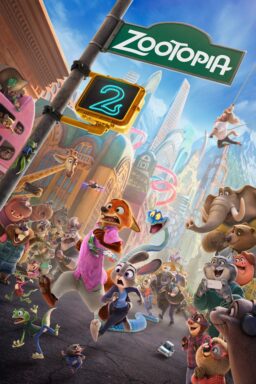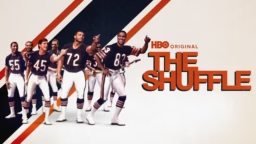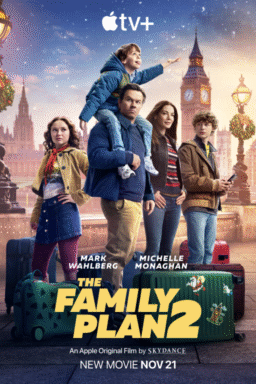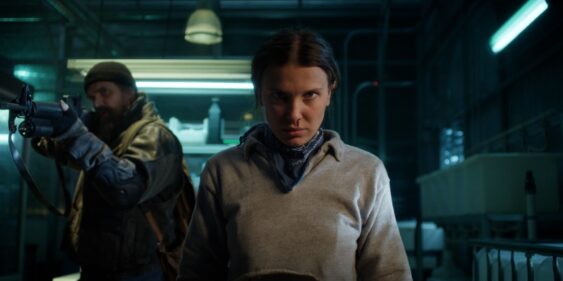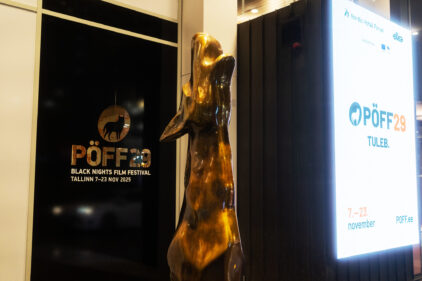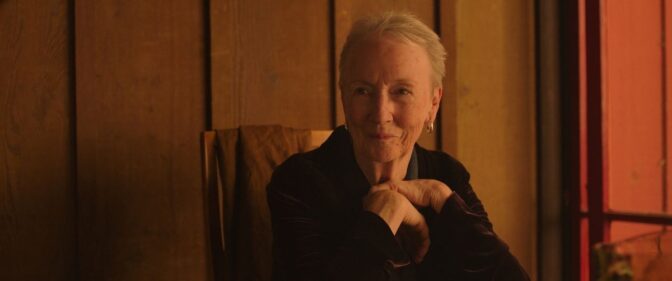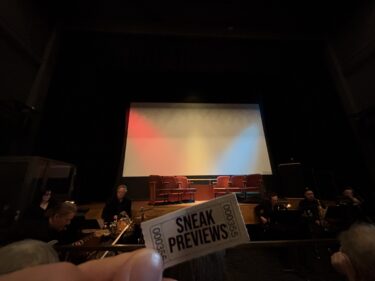You may or may not be aware of “second-screen entertainment.” This is a label that streaming platforms came up with and forced onto filmmakers, owing to research that determined, among other things, that a big percentage of people who watch a thing on Netflix or Amazon aren’t truly watching it. They’re focused on the mobile device in their hand as they sit near a second screen, which is probably a television but could be an iPad or some other device. Sometimes they watch and listen. Other times, they half-listen while doing something else. Sometimes they get so engrossed in something on their phone (or something occurring in the household) that they lose track of time. Then they remember that they put on something to watch and are now confused about what’s happening in the story. If nobody’s in the room, they might run the thing back to catch up. Or they might shrug and let it run. If there’s another person in the room, they might ask them, “Oh, so she’s actually the princess?” or “Is that her father?” or “Are they not in Morocco anymore?” or “Is that Dermot Mulroney?” This second person might not answer because they’re playing Candy Crush.
Which brings us to “Fountain of Youth.”
When future generations of media scholars need an example of a work that gathered up and displayed with peerless skill all of the techniques yet devised for a new medium—in this case, second-screen entertainment, which superficially resembles cinema or television, but is meant not to make any demands on anybody—”Fountain of Youth” might be the work that they they name-check. It is the “Citizen Kane” of second-screen entertainment. Every frame rewards inattention.
John Krasinski plays Luke Purdue, an adventurer looking for the fountain of youth, which may or may not be an actual fountain. Natalie Portman is Charlotte Purdue, Luke’s younger sister, who used to be in the adventure business but abandoned it to live a normal life, and is now a curator at an art gallery filled with masterpieces, one of which Luke steals, not to sell, but to…
Nah. Better to let you half-watch it for yourself while scrolling your phone, because that’s how this thing is pretty obviously intended to be watched. “Fountain of Youth” seemingly can’t go a full minute without one of its characters verbally describing what is already happening, clarifying plot points and relationships, naming people and giving their personal history and/or resume where relevant, or establishing how hard it is to do a thing or how long it’s been since this character saw that character. It’s packed with the kind of “dialogue” that David Mamet once described as “here we go to the bottom of the staircase that we’re trying to get to the bottom of.”
“Charlotte, do you think this is what you should be doing?” Luke asks her in the museum where she works, right before tearing a painting and its frame off the wall, removing the canvas, and taking it away to become part of his as-yet-unspecified mission. “The three of us, we had such great adventures,” he adds. “Yeah,” Charlotte says, “but that was ten years ago. Dad died, I was raising a baby, juggling a job, and I had to grow up.” Did we even need to know those things, in a work of action cinema, a genre wherein characters don’t even need to have last names or speak our language to instantly engage our interest? If the answer is yes, might there be some other way to get the information across, besides the kind of employment gap summary that a person might give in a job interview?
It’s almost all like this. When Luke pulls Charlotte away after that museum conversation, they have an obligatory car chase that ends with them pulling into the back of a truck operated by Luke’s cohorts, and she declines his offer to join the adventure, and he says he’ll return her to the museum. Then we get a scene with Charlotte and an investigator walking through the museum, and the investigator says, “Forgive what seems like an imposition, but you are the curator of this museum, and you’ve been missing for a few hours.” The investigator is named Jamal Abbas (Arian Moayed of “Succession”). He introduces himself only after Charlotte says, “And you are?” As cliche screenplay irritants go, that’s right up there with a rugged he-man growling “In English, doc!” after a scientist thoughtfully provides a detailed explanation of the crisis facing the world, and “Do you know what your problem is?” followed by a thumbnail description of the other character’s issue, which inevitably leads to a riposte like, “Gee, thanks, I didn’t realize you were a psychologist.”
The film’s director, Guy Ritchie, knows how to make stylish light entertainment filled with expensive clothes and vehicles and fabulous locations, with a soundtrack full of cool but not-overused pop songs (except when he goes dark, as he did in “Wrath of Man,” a masterpiece). Ed Wild handled the wide-format cinematography, which does fun things with focus shifts and whip-pans. The action here isn’t up to Richie’s usual standards. It’s not terrible; the camera often moves in surprising ways, especially during fight scenes. But a lot of the images are too close and too flat, and the action wears out its welcome through repetitiveness without evolution. It often seems to be there to get second-screeners to perk up and go, “Oh—something’s happening?” James Herbert edited the movie, perhaps with the mix of deep annoyance and honor-bound diligence of a lifeguard doing CPR on someone who dove into a pool fully clothed and drunk.
The script is credited to James Vanderbilt, who is also an executive producer, and who wrote one all-time classic movie (“Zodiac”), plus a lot of other movies that range from bad to adequate to very good, which is normal for somebody who’s been in the business a while. You know where this movie falls on the quality scale.
That’s especially puzzling because the story tangentially involves the 1915 sinking of The Lusitania, whose victims included the screenwriter’s paternal great-grandfather, Alfred Quinn Vanderbilt, Sr. The movie does a decent job of doling out historical information before and after the heroes go on-site out in the ocean to find the ship. But it’s not taking any chances, so we hear a bit of dialogue from Krasinski over a nondescript shot of their boat in motion, clearly added in postproduction: “We all know The Lusitania was the largest cruise liner in the world. During World War I, a German U-boat sank it, and one of those souls was the great Vanderbilt himself.”
Soon after, while exploring the raised-to-the-surface wreck of The Lusitania, Charlotte is held at gunpoint by Esme (Eiza González), part of a group of self-styled “protectors” of the Fountain. Luke handles the moment, er, let’s say poorly, and Charlotte is furious. Once that episode has concluded, the siblings have a conversation on a terrace where she’s clearly still mad about what happened on The Lusitania. “I’m not talking to you,” she tells Luke. “Are you still mad about what happened on The Lusitania?” Luke asks. “That woman held a gun to my head!” she says, in case we forgot what happened five minutes ago.
It seems odd that a story with a familial connection to the writer would be half-assedly conceived and assembled. What transpired behind the scenes? Did Apple executives inundate the filmmakers with “notes” like “Can we establish one more time that they’re related?” or “Can we make absolutely sure we know they’re in on a boat that’s going to find The Lusitania?” If so, we’ll likely never hear about it, because contracts with global mega-corporations typically include a provision against badmouthing the bosses. Other possible explanations include (1) everyone involved with “Fountain of Youth” said yes to this movie because they had a hole in their schedules and wanted to make some Apple money and travel to glamorous locales, not because they wanted to make something great or even good, and (2) the movie was rewritten with the intention of making it better, but this was the best they could do. Which of those scenarios is the saddest?
Krasinski is miscast. He often seems miscast. I think it’s a leading man self-image problem. He seems to want his character to be liked and thought of as a basically normal, decent guy. But the role really needed a classic Guy Ritchie motormouthed dervish ne’er-do-well weirdo, somebody so charming that you can’t resist him though you know he’s trouble. The cast is otherwise filled with strong actors, including Portman, who does a lot with a little, and Domhnall Gleeson as Owen Weaver, the young man who funds the expedition and has the only interesting backstory of any of them. But none are resourceful enough to hide the fact that they must struggle to make the dialogue not sound dull or dreadful. You see and hear them trying to spice up the lines with odd pauses and intonations and a kind of shrugging, “Wow, I’m sorry I had to say that” body language. What’s the word for this? Maybe abashed. Or apologetic. Not thrilled, that’s for sure.
The movie improves a lot in its final third, which includes a long, mostly talk-free section that lets the characters explore one of those ancient, immense, booby-trapped structures common to Indiana Jones films and their imitators. Ritchie has become adept at presenting digitally enhanced or created images that feel real because of the perspective he’s chosen and the way he reveals things to us. But it’s not enough to overcome the feeling that you’re watching not art—not even entertainment—but content.
Which is to say, something that, at the end of the day, is interchangeable with anything else that happens to be carried on the platform. The goal isn’t to get you to lean in and become fascinated, but to stay just involved enough that you don’t close the app. You know how stuff on streaming platforms auto-plays on your the second screen after you’ve dozed off? They count it as having been “watched.” It’s a scam that would be bitterly amusing if it weren’t contributing to the degradation of what use to be entertainment. Perhaps eventually, digital technology will bring things full circle, and load up Apple with plagiarized LLM and Gen AI prompt-slop that no person actually made, to be not-watched by sleeping audiences all over the world.

